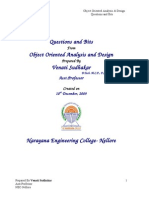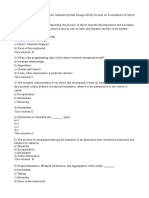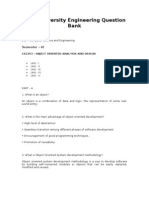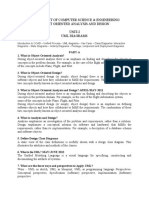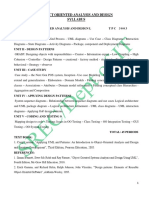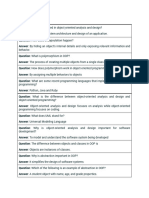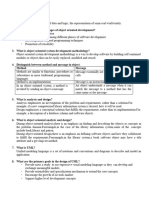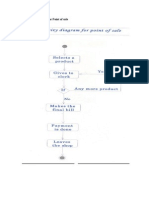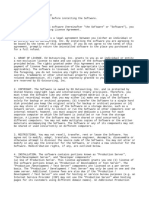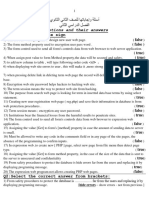0% found this document useful (0 votes)
8 views9 pagesObject Oriented Techiniques
The document provides a comprehensive overview of Object-Oriented Analysis and Design (OOAD), covering key concepts such as encapsulation, inheritance, polymorphism, and various types of diagrams used in modeling. It includes multiple-choice questions and answers that define fundamental principles, design patterns, and relationships in object-oriented programming. Additionally, it explains the roles of classes, objects, methods, and design patterns in software development.
Uploaded by
Sachin SamriddhCopyright
© © All Rights Reserved
We take content rights seriously. If you suspect this is your content, claim it here.
Available Formats
Download as DOCX, PDF, TXT or read online on Scribd
0% found this document useful (0 votes)
8 views9 pagesObject Oriented Techiniques
The document provides a comprehensive overview of Object-Oriented Analysis and Design (OOAD), covering key concepts such as encapsulation, inheritance, polymorphism, and various types of diagrams used in modeling. It includes multiple-choice questions and answers that define fundamental principles, design patterns, and relationships in object-oriented programming. Additionally, it explains the roles of classes, objects, methods, and design patterns in software development.
Uploaded by
Sachin SamriddhCopyright
© © All Rights Reserved
We take content rights seriously. If you suspect this is your content, claim it here.
Available Formats
Download as DOCX, PDF, TXT or read online on Scribd
/ 9


